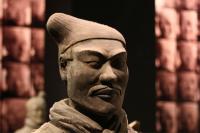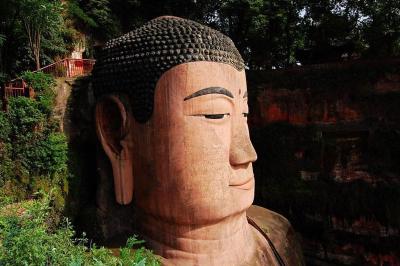Qianling Mausoleum (Qian Mausoleum)
Located in Qian County and 80 kilometers away from Xi'an city, the Qianling Mausoleum was built in 684. It is China's only married emperor buried together, the third Tang emperor, Li Zhi (also called Tang Gaozong), and China's first and only governing Empress Wu Zetian. It is the most typical and best preserved of all the eighteen Tang mausoleums.
Qianling Mausoleum or the Tomb of Emperor Tang Gaozong is imposing and stately. The most eye-catching design is the stone-men statues outside the rosefinch gate, orderly and respectfully arranged in front of the tomb, as if to greet the arrival of the emperor in formation. Qian Mausoleum is also one of the few tombs of ancient Chinese imperial tombs that have not been excavated and stolen, and the unearthed cultural relics are all from the accompanying tombs in Qianling, such as Princess Yongtai's Tomb and Prince Yide's Tomb.
Xian Qianling Mausoleum Facts
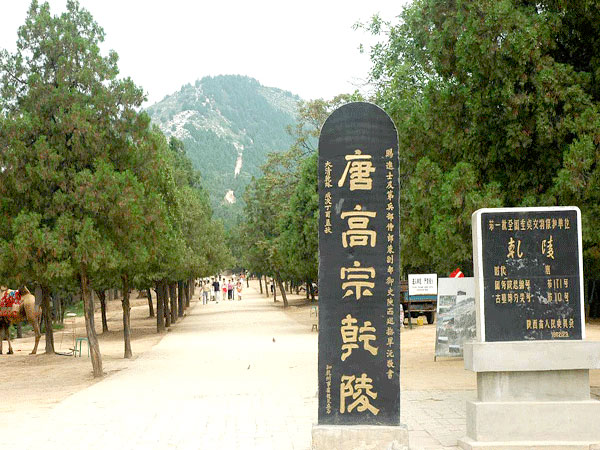
What to See?
Situated on Mount Liang, north of the Wei River, and 1,049 m (3,442 ft) above sea level, Qianling Mausoleum was flanked by Leopard Valley to the east and Sand Canyon on the west. The tomb chambers of Emperor Gaozong and Empress Wu Zetian are located deep within Mount Liang. Unlike many other Tang Dynasty tombs, is notable as the only mausoleum to escape the “unwelcome” attention of tomb robbers as "the tomb chamber of Qianling was closed up with a stone gate sealed with iron to make it secure" according to the records. Inside the mausoleum stood 378 buildings that included the Sacrifice Hall, a Pavilion, a Hall of Ministers and numerous corridors. The inner wall which is 2.4 meters thick, enclosed 240,000 square meters with four sides in a trapezoidal shape, the north and south segments were each 1,450 meters long.
The Qian mausoleum is famous for its many Tang Dynasty stone statues located above ground and the mural paintings adorning the subterranean walls of the tombs. Exquisite and elegant stone statues include horses, winged horses, lions, ostriches, officials, and foreign envoys have stood upright on top of Liangshan Mountain for over 1,200 years. Most of these stone pieces line along the sides of the spirit path, from outside Rosefinch Gate to the north. The famous Wu Zetian Tablet stands on the east side of Sima Road outside rosefich gate, standing out among the stone carvings in the whole Qianling Maulofeum with its exquisite carving skill.
Besides the main tumulus mound and underground tomb of Gaozong and Wu Zetian, there is a total of 17 smaller attendant tombs with only five of them have been excavated by archaeologists.
Main Mausoleum
When Qianling was built, it was in the flourishing time of Tang dynasty, rich kingdom, grand scale, magnificent and solemn architectures. The layout of the mausoleum is modeled after Chang'an (today's Xi'an), the ancient Chinese capital of the Tang dynasty. It’s divided into the imperial city, the palaces and the outer city. According to the documents, there were two layers of original city walls with four exit gates set surrounded, including Azure Dragon Gate in the east, Rosefich Gate in the south, White Tiger Gate in the west, Xuanwu Gate in the north.
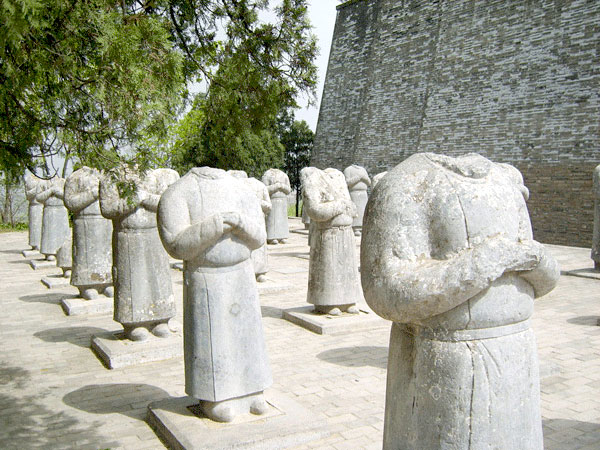
Underground Palace
Based on the exploration and combined with the documents unearthed, experts speculate that the tomb chamber is composed of the tomb passage, holes, the courtyard, and the front, middle and back three chambers, with the middle chamber housing the coffin beds. The back chamber of the underground palace is set with a stone bed, on which are placed clothes, sword ornaments, food of thousands of tastes and the things that the dead liked while they were alive.
>> Recommended Xian Tours:
Wordless Stele
East of the Sima Road outside the Vermilion Bird Gate of Qianling Mausoleum stands the world-renowned Wordless Stele, erected by China's only female emperor, Wu Zetian. Carved from a single massive stone block, it measures 7.53 meters in height, 2.1 meters in width, and 1.49 meters in thickness, with a total weight of 98.8 tons. The stele's capstone bears no inscription. Its front features a central chi dragon flanked by four on each side, totaling nine Chinese dragons—hence its alternative name, the “Nine Dragons Stele.” Both sides display ascending dragon motifs, each carved in line engraving depicting a soaring, dancing dragon rendered with remarkable lifelike detail. The front of the pedestal also features an incised lion-horse scene (or “battling lion and horse”), measuring 2.14 meters long and 0.66 meters wide. The horse is depicted with its hooves bent and head lowered, while the lion stands with its head raised and eyes glaring. The stele is further adorned with numerous floral and plant motifs, rendered with fine, flowing lines.
Why are there no words on the stele? The first view holds that Wu Zetian erected the "uninscribed stele" to boast about herself and to demonstrate her great virtue and achievements that cannot be expressed through words. The second view suggests that Wu Zetian realized her crimes were too severe and decided it would be better not to inscribe the stele. The third view believes that Wu Zetian was a shrewd ruler, and let future generations judge her merits and demerits.
The Monument Commemorating the Sage Empress
Located west of the Sima Path and facing the Uninscribed Stele, this monument was personally composed by Empress Wu Zetian and inscribed by her son, Emperor Zhongzong of Tang, Li Xian. It serves as a commemorative stele extolling the virtues of Emperor Gaozong of Tang.
This stele is square-shaped, with a height of 7.53 meters, a width of 1.86 meters on each side, and weighs approximately 89.6 tons. The entire stele is composed of seven parts: the top, the body, and the base. The top symbolizes the sun, the base symbolizes the moon, and the five middle sections represent the five elements of metal, wood, water, fire, and earth. Ancient Chinese believed that all things are composed of these seven elements: "sun, moon, metal, wood, water, fire, and earth."
The inscription, written in parallel prose, totals 46 lines and over 5,600 characters, all in regular script. Due to millennia of weathering and human damage, only about 1,600 characters remain legible today.
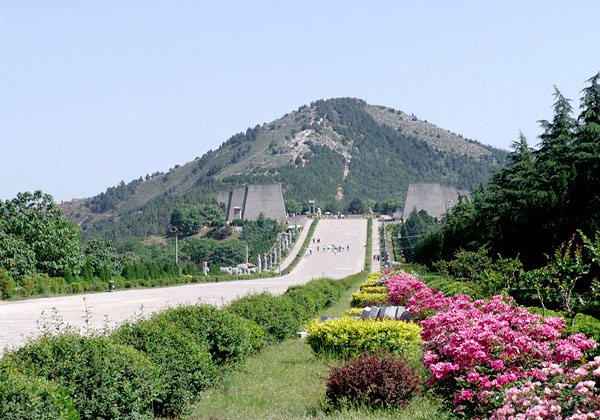
Burial Tombs of Qianling Mausoleum
A total of 17 burial tombs were discovered at Qianling Mausoleum. These include two tombs of crown princes, three tombs of princes, four tombs of princesses, and eight tombs of ministers.
Between 1960 and 1971, excavations of five accompanying tombs, including those of Princess Yongtai, Crown Prince Zhanghuai, Crown Prince Yide, Secretary of the Central Secretariat Xue Yuanchao, and Duke of Yan Li Jinxing, yielded over 4,300 precious cultural relics. Among them are over 100 brilliantly colored tomb murals, a truly magnificent and unique gallery of ancient Chinese art. Murals such as "Polo," "Guests and Envoys," "Watching Birds and Catching Cicadas," "Hunting," and "Ceremonial Procession" are of great value not only for the study of Tang Dynasty painting, but also for the research on Chinese architecture of Tang Dynasty, Chinese clothing, customs, sports, court life, and foreign affairs.
How to Get to Qianling Mausoleum from Xi'an?
You can take Sightseeing Bus Line 3 at the east square of Xian Rail Station and get to Qianling directly once a day at 08:00 and returns to Xian at 15:00. It takes about 2hrs one way. The route will be shut up at the low season (winter).
